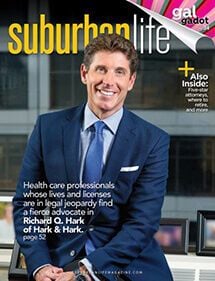What is moral turpitude? What is good moral character? These questions arise in cases contesting a disciplinary action based upon a conviction of a misdemeanor or felony and in applications for reinstatement of a professional license after revocation. How does one prove that they are both a person of moral character and posses the moral turpitude that warrants either reinstatement or no disciplinary action?Every licensing scheme possesses a provision allowing that licensing board to revoke or cancel a license when a licensee is found guilty of a felony charge or an felony or misdemeanor offense in conjunction with the practice of that license, or found guilty of conduct involving moral turpitude by court of competent jurisdiction or a jury. Moral turpitude is not defined in any of the licensing acts. The Pennsylvania Supreme Court routinely defines moral turpitude to me anything done knowingly contrary to justice, honesty, or good morals. The terms good moral character and the lack of moral turpitude are used interchangeably to define each other in many cases. ‘Fraud’ certainly has acquired a peculiar and appropriate meaning in the law. Black’s Law Dictionary 594 (5th ed. 1979) defines fraud as any kind of artifice employed by one person to deceive another.In a March 2015 case, an individual convicted of 3rd degree murder, who served 10 years of a 10 year sentence, sought reinstatement of his podiatric license. He presented character witnesses, proof of some rehabilitative efforts, and efforts to maintain up-to-date on podiatric medicine continuing education requirements. The board rejected his application for reinstatement, concluding he had not presented sufficient evidence of rehabilitation and did not present sufficient remorse. Long v. Bureau of Prof’l & Occupational Affairs, 2015 Pa. Commw. LEXIS 130, (Pa. Commw. Ct. 2015).Many cases state that the petitioner seeking reinstatement carries the burden of proof in establishing that they meet all of the licensure requirements for reinstatement. The pivotal issue on these types of cases, both for reinstatement and contesting disciplinary action, is what efforts were made by the licensee to rehabilitate their character such that they now or still possess good moral character to be trusted to hold a license at the time of reinstatement or disciplinary action. Garner v. Bureau of Prof’l & Occupational Affairs, 97 A.3d 437, 440, 2014 Pa. Commw. LEXIS 391, 5-7, 2014 WL 3734280 (Pa. Commw. Ct. 2014)In reviewing the evidence a petitioner presents demonstrating good moral character, character witnesses, post jail release behavior, and the delay in time between criminal event and application for reinstatement are not enough. Proof of sufficient rehabilitation does not just include attending victim counseling, religious services, and paying restitution. Krichmar v. State Board of Vehicle Manufacturers, Dealers and Salespersons, 850 A.2d 861, 864 (Pa. Cmwlth. 2004), requires clear and credible expressions or evidence of remorse and corrective community action. Lack of remorse itself is a sufficient basis to deny reinstatement. Storch v. State Board of Vehicle Manufacturers, Dealers and Salespersons, 751 A.2d 263, 264 (Pa. Cmwlth. 2000).Shallow and unimposing claims of entitlement to reinstatement that show little remorse for the victim of the crime will not carry the day. Licensing boards look for individuals to rehabilitate their character through established patterns of behavior that are honorable, trustworthy and consistent with the communities’ current ethical standards that show an absence of moral turpitude. The “determination of whether a crime involves moral turpitude turns on the elements of the crime, not on an independent examination of the details of the behavior underlying the crime.” Licensing boards will not re-litigate the facts underlying the criminal conviction.Character witnesses must base their conclusions of an applicant’s credibility upon factual interaction and consensus amongst a large group of individuals. Bringing to a hearing just the respondent/applicant’s immediate social or family circle will not carry the day. Employment related job evaluations and supervisors and coworkers who may provide the Board with significant and weighty testimony about the applicant’s established pattern of honorable and trustworthy behavior consistent with current community ethical standards is a priority in the evidence presented.Call me to discuss your disciplinary action or attempts at reinstatement of your professional license.
Good Moral Character? Moral Turpitude?
On Behalf of Hark and Hark | Apr 20, 2015 | Firm News |
Categories
- Blog (36)
- Criminal Defense (47)
- Drug Crimes (30)
- Dui (20)
- Federal Crimes (13)
- Firm News (306)
- Injuries (6)
- Medical Nursing (58)
- Pennsylvania Criminal Law (34)
- Philadelphia Criminal Justice Updates (13)
- Professional License Application (37)
- Professional License Issues (183)
- Professional Misconduct (7)
- Substance Abuse (1)
- Uncategorized (2)
- USMLE and ECFMG (3)
Archives
- April 2024 (3)
- March 2024 (2)
- February 2024 (3)
- January 2024 (2)
- December 2023 (3)
- November 2023 (3)
- October 2023 (4)
- September 2023 (1)
- August 2023 (2)
- July 2023 (3)
- June 2023 (3)
- May 2023 (2)
- April 2023 (3)
- March 2023 (3)
- February 2023 (3)
- January 2023 (2)
- December 2022 (4)
- November 2022 (3)
- October 2022 (3)
- September 2022 (2)
- August 2022 (4)
- July 2022 (4)
- June 2022 (5)
- May 2022 (2)
- April 2022 (2)
- March 2022 (3)
- February 2022 (4)
- January 2022 (2)
- December 2021 (3)
- November 2021 (2)
- October 2021 (3)
- September 2021 (2)
- August 2021 (4)
- July 2021 (3)
- June 2021 (3)
- May 2021 (3)
- April 2021 (2)
- March 2021 (3)
- February 2021 (3)
- January 2021 (4)
- December 2020 (4)
- November 2020 (5)
- October 2020 (3)
- September 2020 (8)
- July 2020 (3)
- June 2020 (5)
- May 2020 (2)
- April 2020 (8)
- March 2020 (9)
- February 2020 (7)
- January 2020 (4)
- December 2019 (8)
- November 2019 (5)
- October 2019 (6)
- September 2019 (1)
- August 2019 (3)
- July 2019 (1)
- June 2019 (3)
- May 2019 (5)
- April 2019 (6)
- March 2019 (4)
- February 2019 (5)
- January 2019 (7)
- December 2018 (10)
- November 2018 (8)
- October 2018 (7)
- September 2018 (5)
- August 2018 (6)
- July 2018 (3)
- June 2018 (8)
- May 2018 (5)
- April 2018 (1)
- March 2018 (2)
- February 2018 (2)
- January 2018 (4)
- December 2017 (2)
- November 2017 (5)
- October 2017 (3)
- September 2017 (2)
- August 2017 (4)
- July 2017 (3)
- June 2017 (6)
- May 2017 (2)
- April 2017 (3)
- March 2017 (2)
- February 2017 (1)
- January 2017 (5)
- November 2016 (3)
- October 2016 (5)
- September 2016 (2)
- August 2016 (5)
- July 2016 (1)
- June 2016 (1)
- May 2016 (1)
- April 2016 (2)
- March 2016 (3)
- February 2016 (4)
- January 2016 (2)
- November 2015 (3)
- October 2015 (2)
- September 2015 (3)
- August 2015 (1)
- July 2015 (3)
- June 2015 (3)
- May 2015 (2)
- April 2015 (4)
- March 2015 (3)
- February 2015 (1)
- January 2015 (2)
- December 2014 (1)
- November 2014 (3)
- October 2014 (1)
- September 2014 (2)
- August 2014 (2)
- July 2014 (2)
- June 2014 (5)
- May 2014 (3)
- April 2014 (5)
- March 2014 (2)
- February 2014 (1)
- January 2014 (2)
- December 2013 (3)
- November 2013 (5)
- October 2013 (4)
- September 2013 (2)
- July 2013 (3)
- June 2013 (3)
- May 2013 (5)
- April 2013 (2)
- February 2013 (1)
- January 2013 (1)
- December 2012 (2)
- November 2012 (1)
- October 2012 (7)
- September 2012 (2)
- August 2012 (1)
- July 2012 (1)
- June 2012 (1)
- May 2012 (1)
- April 2012 (1)
- February 2012 (3)
- January 2012 (2)
- September 2011 (1)
- August 2011 (1)
- June 2011 (2)
- May 2011 (1)
- April 2011 (2)
- March 2011 (2)
- February 2011 (1)
- January 2011 (1)
- December 2010 (3)
- November 2010 (2)
- October 2010 (1)
- September 2010 (1)
- August 2010 (3)













